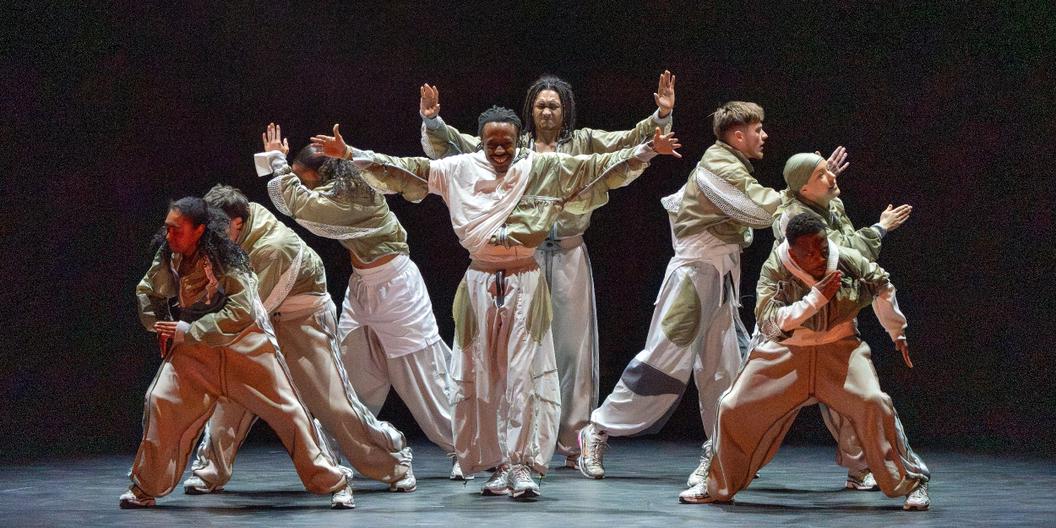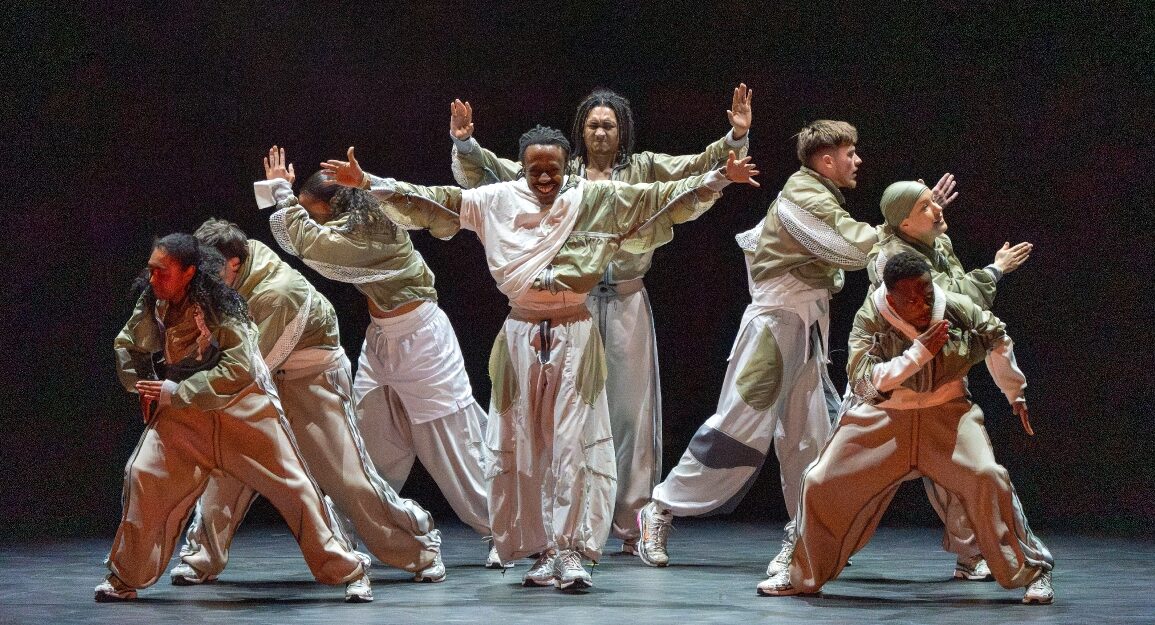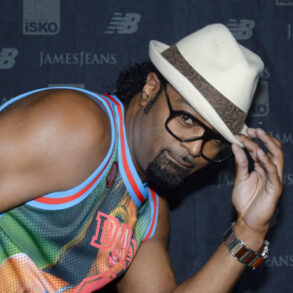
The U.S. premiere of U.K. hip-hop dance theater company, Boy Blue, brought energy, rhythm and artistry to Jazz at Lincoln Center’s Rose Theater last weekend with Cycles.
The show served as an exploration of hip-hop’s rich history, choreographed by Kenrick Sandy with music compositions by Michael Asante. The company presented three evening performances at the Rose Theater from March 27-29.
A few minutes before the start of the show, nine dancers took their places in chairs on stage as the audience settled into their own seats. Performers can appear larger than life as they aim to take up space and avoid a large, open theater drowning their movements. This is also in part due to the imaginary fourth wall between performers and audience. However, watching the dancers bounce their legs and stretch on stage before the show began, full of adrenaline, excitement and maybe some nerves, seemed to humanize them. It immediately drew the audience in and contributed to a sense of community that bled off stage into the crowd throughout the entire evening.

The performance promised a “tenacious exploration of hip-hop in all of its forms,” and Boy Blue delivered. Various styles were showcased—breakdancing, krumping, house dancing, and lyrical movements— with each style reflecting a different facet of hip-hop culture.
Yet, the performance maintained an overarching sense of unity despite this variety. Even in solo or duet moments, the cohesion of the entire company was apparent. This unity wasn’t just a byproduct of synchronized movement, but it was reflected in the music that wove effortlessly in and out of various rhythms, the costuming, and even the lighting.
Powerful beats elevated the performance, ensuring that every choreographic moment was
Minimalistic stage design served the show well with nothing to distract from the performance, making the dancers themselves the sole focus. Bright white lighting, dominated by a spotlight that sometimes shone overhead and sometimes from behind the dancers, added an ethereal quality to the show. It felt as though the dancers were emerging from another realm, and in turn, bringing the audience outside of themselves for a moment of transcendence.
Even the costumes echoed the idea of continuity. Monochromatic designs enhanced the visual narrative while subtly allowing each dancer’s individuality to come through, showing that while each dancer brought their unique style to the performance, they were integral parts of a larger work.
Another standout aspect of the show was the sheer athleticism on display as nine dancers graced the stage for nearly the entire evening in constant motion. This was awe-inspiring on its own, let alone their intricacy of body movements and footwork that appeared effortless.
For the show’s duration, these dancers embodied the soul of hip-hop. The show description says that it is “resolute and apologetic” and that’s the message it left for the audience. Cycles served as a powerful piece that felt true to hip-hop’s history of self-expression, identity and protest. Unique and authentically its own, it was clear this show would stay with the audience long after it ended.
Photo Credit: Richard Termine
Reader Reviews
To post a comment, you must register and login.
This post was originally published on this site be sure to check out more of their content.






